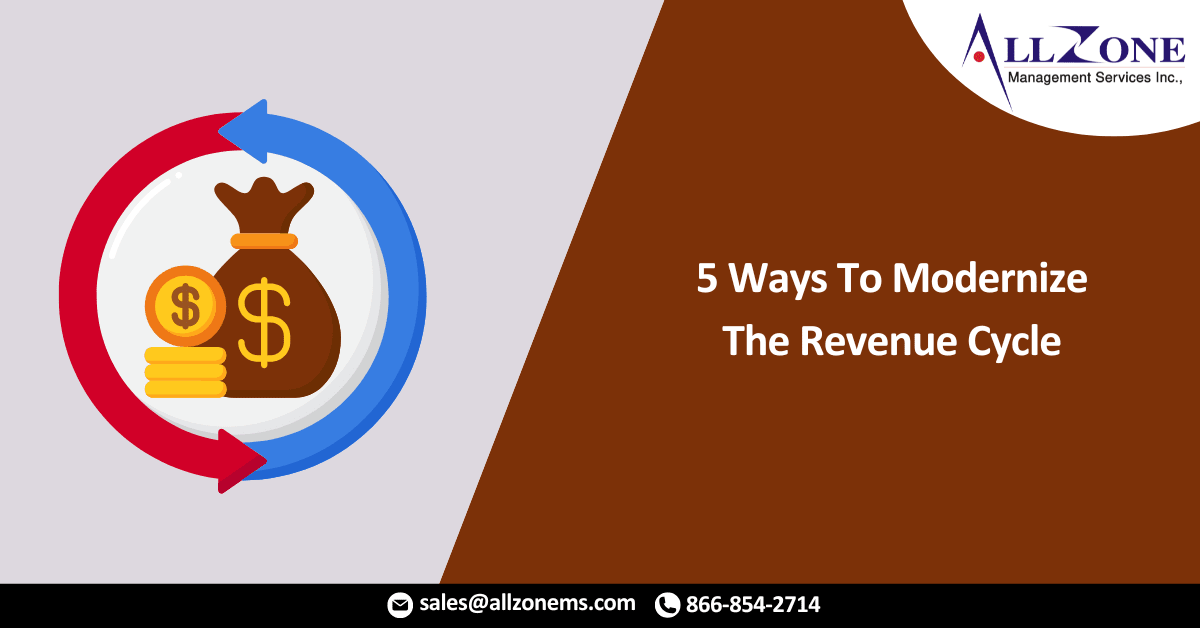The healthcare revenue cycle has become even more complex in recent years for several reasons, including increased patient financial responsibility, more complicated payer contracts and greater regulatory demands. As a result, providers across the nation have been forced to change their approaches to revenue cycle modernization.
Despite attempts to modernize the revenue cycle to meet these new demands through strategies like adding bolt-on technologies or hiring new talent, many healthcare organizations still struggle with outdated processes in the revenue cycle which creates expense, waste, risk and inefficiencies, according to Carrie Moneymaker, MBA, vice president of solution design at Zotec Partners.
“It doesn’t matter what organization … the revenue cycle is outdated in some way, shape or form,” Ms. Moneymaker said during a presentation at Becker’s Hospital Review’s 5th Annual Health IT + Revenue Cycle Conference in Chicago Oct. 11. “You don’t want these processes to be outdated as it costs money, it is risky, it breeds chaos, and it doesn’t make your patients happy. Building patient loyalty is critical in this consumer driven digital age. Now is the time to evaluate your revenue cycle.”
During the presentation, Ms. Moneymaker discussed some tips to help modernize the revenue cycle with hospital and health system financial and revenue cycle leaders.
Before you begin, it is important to generate buy-in across the enterprise. Choose the most important area to begin. Obtain strategic buy in from key stakeholders, including the C-suite, finance team, physicians and even the surrounding patient community, Ms. Moneymaker said.
Look Into Intelligent Automation
A key aspect of revenue cycle modernization is looking to automate repetitive processes, Ms. Moneymaker said. Allowing technology to support talented people will allow for greater efficiencies and help full time employees perform the high-level work.
“Any time you touch something twice you should be able to automate it or at least look into automation,” Ms. Moneymaker said. “Anytime you have redundancies without automation, human capital is required … which is a precious, expensive resource and inconsistent.”
In addition, the efficiencies from automation may result in a workforce reduction, which could help providers retain their top talent as they could offer the top talent a more competitive salary, Ms. Moneymaker said. There is also opportunity to repurpose talented team members into other areas of need.
Understand Your Patient’s Preferences
Shape patient interactions based on how patients want to be engaged. It is important to understand the behaviors that attract, retain and maintain the engagement of your patient population. If you don’t trust technology, your patients will not.
Improve Patient Outreach, Communication Upfront
Another key element in a modern revenue cycle is having processes in place that allow for ample upfront communication with patients about not only their clinical care, but also their financial responsibility, Ms. Moneymaker said. This starts with giving patients information about their bill, such as a cost estimate, eligibility and options to fiscally engage early on.
Further, nearly half of patients said they didn’t pay their bill because they didn’t understand it, Ms. Moneymaker said. Improving engagement with patients about their finances will not only help improve collections, but also patient satisfaction.
“Engaging them early on not only sets up that payment expectation, but it also shows patients that you care about them … Makes them feel like they are not just a diagnosis code,” Ms. Moneymaker said.
Find Ways To Connect Data Sources
In addition to the EMR, most health systems have implemented bolt-on software to key functions across the enterprise, Ms. Moneymaker said. Because these sources are unable to integrate with one another, it causes inefficiencies, confusion, lack of transparency with data and revenue recognition. A modern revenue cycle will not only find ways to connect these otherwise disparate sources, but interpret the shared data for ultimate understanding by the end user, she said.
“Bridging the gap between applications, making data shareable and efficient is key to having a transparent system,” she said. “Providing that transparency … will increase productivity, reduce costs and errors … and also improve patient satisfaction and experience as well as your provider experiences.”
Though many parts of the healthcare revenue cycle remain outdated, it is possible to modernize the revenue cycle by generating buy-in and analyzing current data and processes to identify areas for improvement.
Revenue Enhancement Through Predictive Analytics
Many make decisions based upon inconsistent aged data and are not able to forecast effectively. This manifests a bad decision tree decision with the potential to execute detrimental actions. Data should be transparent, digestible and real time. Looking at your contract variance, guarantor payment predictive analytics, provider and carrier opportunities should be seamless.
It is possible to have an end to end revenue cycle solution without bolt ons, layers of human capital in a measurable and reportable way from encounter to cash collection.
For More Information: 5 ways to modernize the revenue cycle.html

